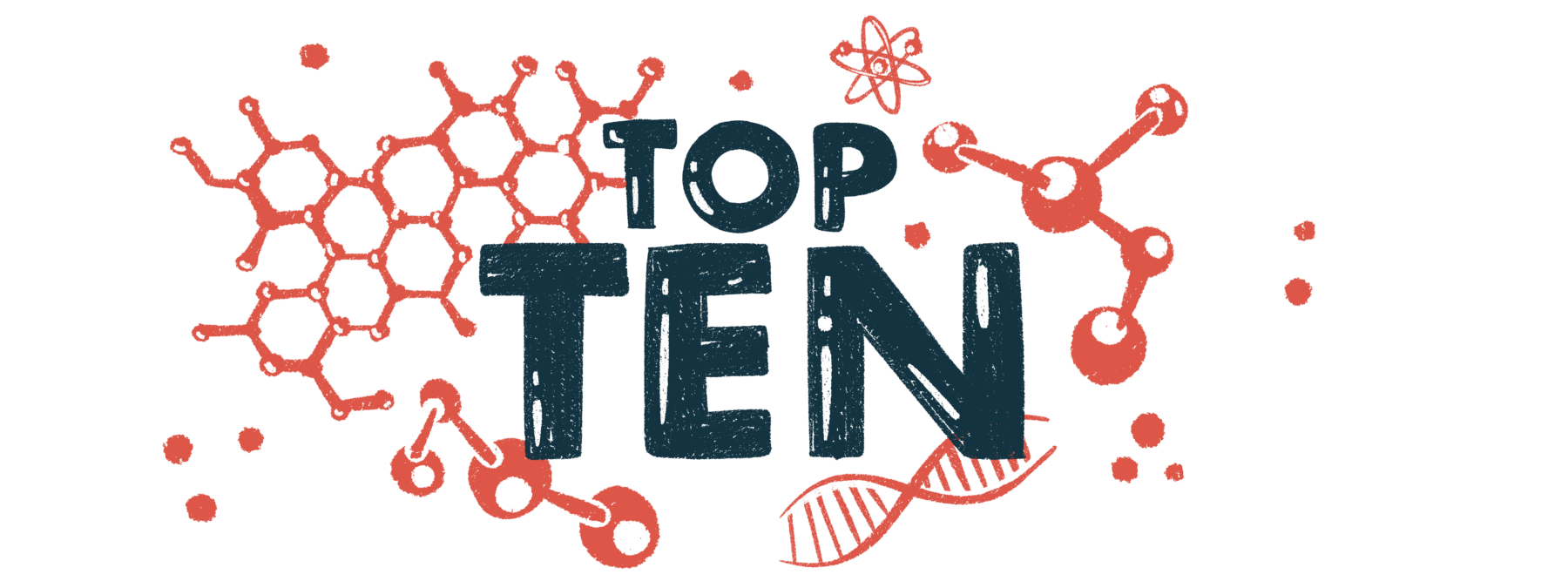Top 10 angioedema stories of 2023
Coverage includes latest news on research, clinical trials, treatment advances

Throughout 2023, we at Angioedema News have been bringing you coverage of the latest news related to angioedema, from basic research to clinical trials and advances in treatment.
Here we’ve compiled a list of the top 10 most-read articles we’ve published this past year. We look forward to continue being a resource for the angioedema community in the year ahead.
No. 10 – Adarx raises funds toward potential HAE therapy ADX-324
Biotech company Adarx Pharmaceuticals announced in August that it had raised $200 million in Series C financing to advance its clinical programs, including an experimental treatment for hereditary angioedema (HAE) called ADX-324.
The investigational treatment entered clinical testing earlier in the year, with a trial testing single under-the-skin injections of the therapy in healthy volunteers and then in people with HAE. ADX-324 is designed to reduce the levels of kallikrein, a protein that controls the production of bradykinin, the signaling molecule that triggers swelling in HAE.
No. 9 – Results from Phase 3 trial of donidalorsen expected soon
A Phase 3 clinical trial of donidalorsen, an investigational treatment for HAE that’s being developed by Ionis Pharmaceuticals, finished recruitment in June with more than 80 patients enrolled.
The study, dubbed OASIS-HAE (NCT05139810), is testing donidalorsen against a placebo when given as under-the-skin injections every month or every other month. Results are expected this year and Ionis plans to use the trial as a basis for applications for donidalorsen’s approval, if they are positive.
No. 8 – Angioedema may be a rare side effect of Dupixent
A report published in July described the case of a woman in her 40s who developed angioedema after treatment with Dupixent (dupilumab), a medication that’s approved for certain skin and respiratory conditions.
Once Dupixent was stopped, her angioedema resolved. This was the first published case to describe Dupixent as a cause of angioedema in an adult, and researchers urge clinicians to be aware of angioedema as a possible side effect of the medication.
No. 7 – Trial of HAE gene editing therapy to include sites in US
Intellia Therapeutics announced in March that it had been cleared to open sites in the U.S. for the Phase 2 portion of a clinical trial (NCT05120830) that’s testing its experimental gene editing therapy NTLA-2002 in people with HAE.
Dosing for Phase 2 began in May and interest in the study was so high that Intellia finished recruitment in Europe and New Zealand before U.S. sites could open. NTLA-2002 is a one-time gene editing therapy designed to reduce kallikrein levels and data from the trial’s Phase 1 portion have been promising.
No. 6 – Genetic testing reveals rare forms of HAE
Scientists in Germany conducted genetic analyses in more than 100 people who had chronic, recurrent swelling episodes, but normal levels of C1 esterase inhibitor (C1-INH). In most cases of HAE, this protein is missing or malfunctions due to mutations in the SERPING1 gene.
Although genetic tests didn’t provide informative results for most patients, rare HAE-causing mutations in the F12 and PLG genes were identified in more than a dozen people, highlighting the importance of genetic testing to identify these rare forms of HAE.
No. 5 – FDA authorizes new Firazyr generic
In August, the U.S. Food and Drug Administration (FDA) approved a new generic version of Firazyr (icatibant), a medication approved as an on-demand treatment for HAE swelling attacks.
The new generic, made and marketed by Eugia Pharma Specialities, a subsidiary of Aurobindo Pharma, joins several other generic versions of Firazyr authorized in the U.S.
No. 4 – Intellia planning Phase 3 study of NTLA-2002 in 2024
In August, Intellia announced it had wrapped up recruitment for the Phase 2 portion of a clinical trial of NTLA-2002. The company also said it was planning to launch a pivotal Phase 3 clinical trial to test the therapy.
The Phase 3 study is planned to include sites in the U.S. and, pending feedback from regulatory agencies, is expected to launch between July and September 2024.
No. 3 – Garadacimab prevents swelling in Phase 3 trial
Results from a Phase 3 clinical trial called VANGUARD (NCT04656418) showed that 62% of HAE patients treated with garadacimab were free from swelling attacks over the course of the study. In comparison, all the patients given a placebo had swelling attacks during the study.
Based on positive findings, garadacimab’s developer CSL Behring sought regulatory approval of the once-monthly injection therapy, which is designed to prevent swelling by targeting a protein called FXIIa, and announced in December that its applications were under review in the U.S. and Europe.
No. 2 – Injections under the skin prevent HAE swelling during pregnancy
Scientists in Spain reported the case of a woman with HAE type 3 who had recurrent swelling attacks during pregnancy. She was given prophylactic (preventive) treatment with plasma-derived C1-INH given by injection under the skin, rather than into the bloodstream, which is more common, but also can cause complications.
The treatment was effective at preventing swelling throughout delivery by C-section and breastfeeding, and the woman’s baby boy was healthy.
No. 1 – Two men with common form of angioedema misdiagnosed with rare HAE subtype
Scientists reported the cases of two men who had recurrent swelling symptoms, but normal levels of C1-INH. Both were initially diagnosed as having a rare form of HAE caused by an unknown mutation, but were ultimately found to have a more common type of angioedema resulting from the overactivity of mast cells, a type of immune cell involved in allergic reactions.
Treatments targeting mast cells were effective for managing symptoms in both men, underscoring the importance of an accurate angioedema diagnosis.
***
We wish all of our readers a bright and happy new year!






